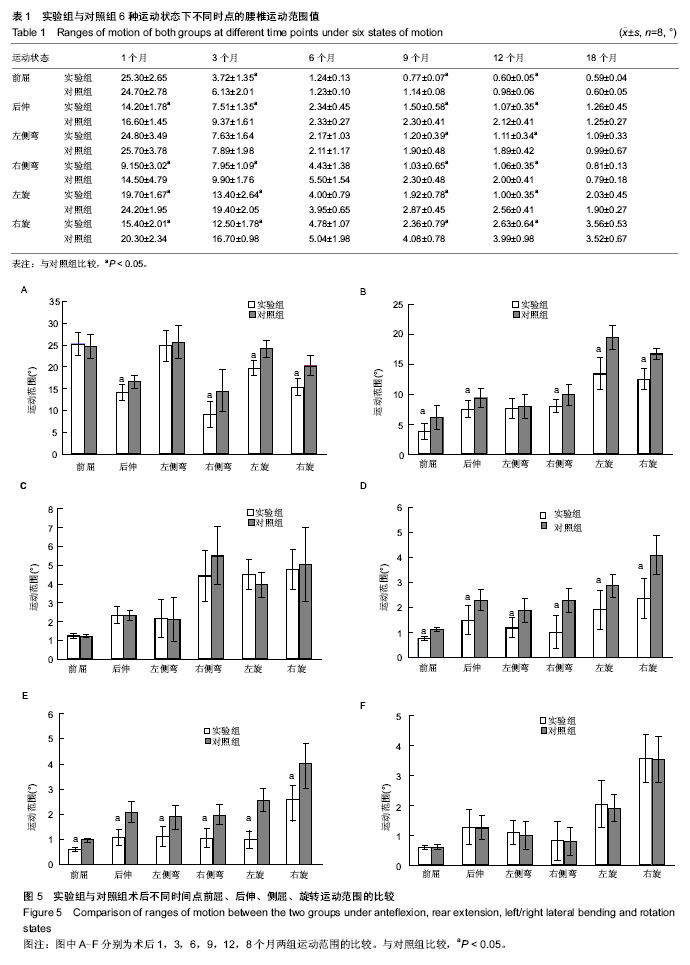| [1] 刘列华,兰阳军,周强.腰椎融合手术方式的历史与进展[J].中国矫形外科杂志,2013,21(24):2486-2489.
[2] Röllinghof M,Zarghooni K,Hackenberg L,et al.Quality of life and radiological outcome after cervical cage fusion and cervical disc arthroplasty.Acta Orthop Belg. 2012;78(3): 369-375.
[3] Tumialán LM,Ponton RP,Riccio AI,et al. Rate of return to military active duty after single level lumbar interbody fusion: a 5-year retrospective review. Neurosurgery. 2012; 71(2): 317-324.
[4] Isley MR,Zhang XF,Balzer JR,et al.Current trends in pedicle screw stimulation techniques: lumbosacral, thoracic, and cervical levels.Neurodiagn J. 2012;52(2):100-175.
[5] Suk S,Lee CK,Kim WJ,et al.Adding posterior lumbar interbody fusion to pedicle screw fixation and posterolateral fusion after de-compression in spondylolytic spondylolisthesis.Spine (Phila Pa 1976).1997;22(2):210-220.
[6] Hasegewa K,Kitahara K,Hara T,et al. Biomechanical evaluation of segmental instability indegenerative lumbar spondylolisthesis.Spine (Phila Pa 1976).2009;18(4):465-470.
[7] 买尔旦•买买提,盛伟斌,阿里木•阿布都热西提,等.椎间融合器融合和自体骨融合治疗腰椎滑脱效果的Meta分析[J].中国组织工程研究,2013,17(52):9041-9048.
[8] Rao RD,Gourab K,Bagaria VB,et al.The effect of platelet-rich plasma and bone marrow on murine posterolateral lumbar spine arthrodesis with bone morphogenetic protein.J Bone Joint Surg Am.2009;91(5):1199-1206.
[9] Urrutia J,Mery P,Martinez R,et al. Cultured autologous bone marrow stem cells inhibit bony fusion in a rabbit model of posterolateral lumbar fusion with autologous bone graft.J Clin Neurosci.2010;17(4):481-485.
[10] Qiu QQ,Shih MS,Stock K,et al.Evaluation of DBM/AM Composite As a Graft Substitute for Posterolateral Lumbar Fusion.J Biomed Mater Res B Appl Biomater. 2007;82(1): 239-245.
[11] Hsu CJ, Chou WY, Teng HP, et al. Coralline hydroxyapatite and laminectomy-derived bone as adjuvant graft material for lumbar posterolateral fusion.J Neurosurg Spine.2005;3(4): 271-275.
[12] Singh K,Smucker JD,Boden SD.Use of recombinant human bone morphogenetic protein-2 as an adjunct in posterolateral lumbar spine fusion: a prospective CT-scan analysis at one and two years.J Spinal Disord Tech.2006;19(6):416-423.
[13] Alanay A, Chen C,Lee S,et al.The adjunctive effect of a binding peptide on bone morphogenetic protein enhanced bone healing in a rodent model of spinal fusion.Spine (Phila Pa 1976).2008;33(16):1709-1713.
[14] 庞迪,叶京兵,陈栋梁,等.PLLA和PLGA体内早期降解的对比研究[J].生物医学工程学杂志,2010,27(6):1298-1302.
[15] 周密,徐建强,李长庚,等.PLGA-TCP-BMP-2人工骨结合带血供自体骨修复骨缺损[J].中国矫形外科杂志,2011,19(10):846-848.
[16] Abdelghany SM,Quinn DJ,Ingram RJ,et al.Gentamicin-loaded nanoparticles show improved antimicrobial effects towards Pseudomonas aeruginosa infection.Int J Nanomedicine. 2012; 7: 4053-4063.
[17] Park JS,Yang HN,Jeon SY,et al.The use of anti-COX2 siRNA coated onto PLGA nanoparticles loading dexamethasone in the treatment of rheumatoid arthritis. Biomaterials.2012; 33(33):8600-8612.
[18] Ravi N,Gupta G,Milbrandt TA,et al.Porous PLGA scaffolds for controlled release of naked and polyethyleneimine-complexed DNA.Biomed Mater.2012;7(5):055007.
[19] Su WP, Cheng FY, Shieh DB, et al. PLGA nanoparticles codeliver paclitaxel and Stat3 siRNA to overcome cellular resistance in lung cancer cells.Int J Nanomedicine. 2012; 7:4269-4283.
[20] Gaignaux A,Réeff J,Siepmann F,et al.Development and evaluation of sustained-release clonidine-loaded PLGA microparticles.Int J Pharm. 2012;437(1-2):20-28.
[21] 李开南,刘建峰,汪学军.可生物降解聚-DL-乳酸腰椎间融合器的设计和生物力学研究[J].中国脊柱脊髓杂志,2007,17(1):38-41
[22] 李开南,汪学军,兰海.聚-DL-乳酸生物降解腰椎融合器的设计及材料学特点[J].中国组织工程研究与临床康复,2008,12(32): 6300-6304.
[23] Chen L,Yang H,Tang T. Cage migration in spondylolisthesis treated with posterior lumbar interbody fusion using BAK Cages.Spine (Phila Pa 1976).2005;30(19): 2171-2175.
[24] Spruit M, Falk RG, Beckmann L, et al. The in vitro stabilising effect of poly ether ether ketone Cages versus a titanium Cage of similar design for anterior lumbar interbody fusion.Eur Spine J.2005;14(8):752-758.
[25] Vaccaro AR, Singh K,Haid R,et al. The use of bioabsorbable implants in the spine. Spine J.2003;3(3):227-223. |

